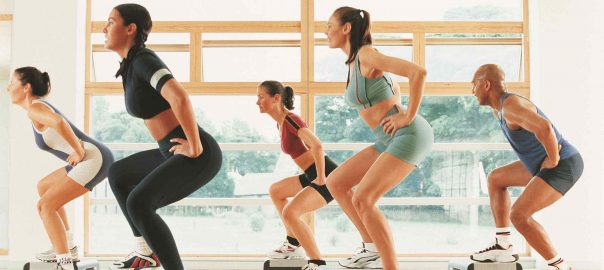
Get Fit With Different Types of Exercise
Exercise – What Level of Impact is Right for you?
Have you ever entered a gym and felt overwhelmed by the rows of expensive equipment and other members strutting around in peak physical shape?
Exercise is an important part of life and necessary to make sure you are living well and able to do the activities you love for as long as possible. Exercising in an inefficient or ineffective way won’t help you achieve your fitness goals. You must determine what exercise will work best for your body and will deliver the results that you want.
In this article, we’re going to compare the three levels of exercise impact—high, low and none—and help you understand the result you can expect based on each level. In addition, we’ll showcase a few popular exercises for each level to help you plan your routine and know what to do the next time you head to the gym.
Exercise Categories
Generally, there are four broad categories of exercises—endurance/cardio, strength, balance and flexibility. Each of the below categories is designed to help you accomplish a different part of fitness.
- Endurance, or cardio, which usually includes aerobic exercises, helps get your heart rate up to improve circulation and improve the health of your heart and lungs.
- Strength is to strengthen your muscles and involves weight lifting and resistance training.
- Balance is great for older adults and works the lower body, with Tai Chi being one example.
- Then, there’s flexibility, which stretch muscles and help you stay limber. The most popular examples of flexibility exercises are yoga and pilates.
The first step is to decide what area of fitness you want to improve and then design a plan that can make it happen!
What Impact is Best?
There are three levels of impact for most types of exercise. This also applies to the level of intensity for a workout. Choosing high, low or no impact depends on your ability, health and personal goals. Sometimes impact is confused with intensity but it’s important to know the difference. Impact is the force your body will need to perform an exercise and intensity is more concerned with the level of difficulty. Every exercise has separate impact and intensity levels.
Let’s review the different types of impact:
High Impact
High impact refers to the force of your body that you need to use to properly do an exercise. The more muscles you must work and the greater amount of force your muscles must exert, the higher the impact will be. High impact exercises include running, sprinting and exercises where you land hard on the ground. For many, these types of exercises are more difficult. With any exercise, you don’t want to suffer an injury, so don’t be shy about trying lower or no impact options, if those are easier.
Low Impact
Swimming is the best example of low impact as your body doesn’t have to experience a lot of pounding as your muscles exert force. Cycling is another one as most bikes are comfortable and come equipped with features to absorb impact like shocks.
Low impact doesn’t mean low intensity. Take one cycling class and you’ll be drenched in sweat, feeling amazing but your joints and muscles will be less sore compared to other high impact workouts.
The benefits of low impact are the reward of a good workout with a ton of calories burned and heart health gained but less wear and tear on your body. These exercises are kinder to your joints and most people can perform them for longer.
No Impact
No impact exercises are a great way to get in shape without subjecting your joints to stress. It’s perfect for older adults, people with joint pain or if you are rehabbing from an injury. There’s no jarring impact on your body, so you can work out for longer or more often every week.
Everyone needs to exercise, and no impact routines are great options for those who want to get healthy but need to take it a bit slower or easier. It’s perfect for those simply trying to be more active or for pregnant women.
Popular Exercises
Each popular exercise fits into one impact category. Remember, if there’s an exercise you like, most can be adjusted to have a lower impact or you can reduce the amount of reps and sets.
For high impact, jogging, squats, lunges, long jumps, burpees and interval training exercises are the most popular choices. They help burn calories but can be taxing on your joints because they involve harsh landings.
Popular low impact exercises include walking, elliptical, cycling, rowing and using the stairmaster. These are easy on the joints while putting your muscles through an intense workout.
For no impact, yoga, pilates and aquatic exercises are the most popular since they are regarded as effective for losing weight and toning muscles. Many exercises where you are seated can be considered no impact and tend to be a favourite for people who are rehabbing an injury.
Establish Goals
No matter what, exercising is important and can even help with mental health and to relieve stress. Health and fitness is best obtained when you go into it with a goal in mind. Do you want to be leaner? Do you want to improve your strength? Do you want to increase your stamina so you can sign up for that 5k marathon in the spring?
Understand your goal and build a plan from there. This will make tracking your progress that much easier, and you can celebrate each success along the way!
Conclusion
Exercise should be a part of every person’s weekly routine. It’s all about finding the right level of impact and intensity that will help you reach peak health without hurting yourself in the process. It’s not a competition. It’s about utilizing your time to maximize your effort and reduce the potential duress on your joints and muscles. The less impact on your body, the more rewarding your workouts will be and you can still enjoy some amazing results.
Don’t forget to have fun while exercising, so that you’ll want to make a part of your weekly routine!






